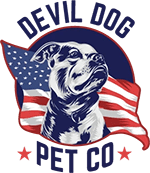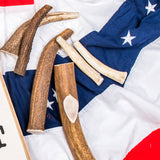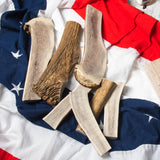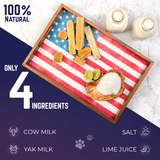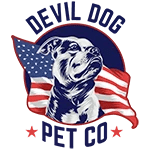Introduction: Tracing the Ancient Roots of Man's Best Friend
When you look into your dog's eyes, you're connecting with a lineage that stretches back thousands of years. The oldest dog breeds represent living links to humanity's earliest partnerships, carrying genetic blueprints that have survived ice ages, migrations, and countless generations of selective breeding.
Key Takeaways
- The oldest dog breeds have lineages that date back thousands of years.
- These breeds serve as living connections to early human-canine partnerships.
- They carry genetic traits that have endured through ice ages and migrations.
- Selective breeding over generations has preserved these ancient genetic blueprints.
Table of Contents
- Introduction: Tracing the Ancient Roots of Man's Best Friend
- The Science and Mystery Behind Dog Domestication
- What Makes a Dog Breed Truly Ancient
- Genetic Pathways and Historical Spread of Ancient Breeds
- The Seven Ancient Lineages That Define Canine History
- Ancient Breeds in the Modern World: Adaptation and Preservation
- Conclusion: A Living Legacy
Understanding what qualifies as an ancient breed isn't just academic curiosity-it's about recognizing the remarkable journey from wild wolves to the diverse canine companions we know today. These breeds didn't emerge from modern kennel clubs or Victorian breeding programs. They evolved alongside human civilizations, shaped by survival, purpose, and the unbreakable bond between species.
Ancient dog breeds are distinguished by their genetic closeness to early domesticated dogs, archaeological evidence of their existence, and preservation of primitive characteristics that modern breeds have largely lost through selective breeding.
Quick Answer
The oldest dog breeds in the world include the Basenji (Africa), Saluki (Middle East), Chow Chow (China), Akita Inu (Japan), Alaskan Malamute (Arctic), Greyhound (Mediterranean), and Xoloitzcuintli (Mexico). These seven ancient lineages have genetic markers and archaeological evidence dating back 2,000-4,000 years, with some potentially tracing to the earliest dog domestication events 9,000-15,000 years ago. Unlike modern breeds developed in the last 200 years, these dogs retain primitive traits, independence, and specialized skills that helped early humans hunt, guard, and survive.
The Science and Mystery Behind Dog Domestication

The story of the first dog in the world remains one of archaeology's most fascinating puzzles. Current genetic evidence suggests dog domestication occurred somewhere between 9,000 and 40,000 years ago, with most scientists settling on a timeline of 15,000-30,000 years ago during the last Ice Age.
Here's what makes this timeline so complex: dogs didn't just appear overnight. The transformation from wolf to domestic dog was a gradual process that likely happened in multiple locations across Eurasia. Genetic studies point to possible domestication events in Central Asia, East Asia, and even dual domestication theories suggesting independent development in both Eastern and Western Eurasia.
Key Finding: Mitochondrial DNA analysis shows that all modern dogs share common ancestry with a now-extinct wolf population, but the exact location and timing of this split continues to evolve as new archaeological evidence emerges.
What we know for certain is that early dogs served critical survival functions. They weren't just companions-they were hunting partners, camp guards, and eventually, as agriculture developed, livestock protectors. This partnership was so successful that dogs spread with human populations across every continent except Antarctica.
The development of agriculture around 10,000 years ago created another evolutionary pressure. Dogs that could digest starches had advantages in farming communities, leading to genetic changes that distinguished them further from their wolf ancestors. This adaptation appears in many of the oldest dog breeds, suggesting they've been living alongside agricultural societies for millennia.
"The oldest breeds aren't just historical curiosities-they're genetic time capsules that preserve traits and behaviors from humanity's earliest partnerships with canines." - Canine genetics research consistently shows these breeds cluster separately from modern breeds in genetic analysis.
What Makes a Dog Breed Truly Ancient
Not every old breed qualifies as ancient. The distinction matters because it separates dogs with genuine prehistoric lineages from breeds that simply have long recorded histories. Ancient dog breeds meet specific scientific criteria that set them apart from even well-established breeds like German Shepherds or Golden Retrievers.
Genetic Markers That Define Ancient Status
The most reliable measure of ancient status comes from genetic analysis. Ancient breeds show:
- Closer genetic relationship to wolves: Their DNA sequences show fewer mutations from the original wolf-to-dog transition
- Distinct genetic clusters: They group separately from modern breeds in phylogenetic trees
- Higher genetic diversity: Less inbreeding and more varied gene pools than modern breeds
- Primitive alleles: They carry genetic variants that modern breeds have lost through selective breeding
Physical and Behavioral Continuity
Ancient breeds retain characteristics that connect them to their prehistoric ancestors. These include:
- Primitive appearance
- Wedge-shaped heads, erect ears, curled tails, and compact, athletic builds that echo their wild origins
- Independent temperament
- Less eager-to-please attitude than modern breeds, reflecting their history as working partners rather than pets
- Seasonal breeding patterns
- Many ancient breeds still follow natural breeding cycles, coming into heat once per year like wolves
- Specialized survival skills
- Enhanced hunting instincts, environmental adaptability, and problem-solving abilities developed over thousands of years
Important Note: Ancient doesn't automatically mean better. These breeds often require experienced owners who understand their independent nature and specific needs. Their primitive traits can be challenging in modern homes without proper training and socialization.
Archaeological evidence provides the final piece of the puzzle. The truly ancient breeds appear in historical records, artwork, and burial sites dating back thousands of years. Egyptian tomb paintings show Greyhound-type dogs, Chinese artifacts feature Chow Chow-like companions, and African rock art depicts Basenji-type hunters.
This combination of genetic, behavioral, and archaeological evidence creates a clear picture: the oldest dog breeds aren't just old-they're living bridges to humanity's earliest relationships with domesticated animals, carrying forward traits and abilities that have sustained them across millennia of change.
Genetic Pathways and Historical Spread of Ancient Breeds

The dispersal of the first dog breeds across the globe tells the story of human migration itself. As early peoples moved across continents, their canine partners traveled with them, adapting to new environments and developing the distinct characteristics we see in today's ancient breeds.
Genetic mapping reveals two primary pathways that shaped the oldest breeds of dogs. The Eastern Eurasian lineage gave rise to breeds like the Chow Chow, Shiba Inu, and Basenji, while the Western Eurasian branch contributed to breeds like the Saluki and Greyhound. This split occurred roughly 14,000-20,000 years ago, creating genetic signatures that persist today.
Archaeological Evidence: Dog remains found at the Bonn-Oberkassel site in Germany (14,200 years old) and Goyet Cave in Belgium (36,000 years old) show clear domestication markers, supporting the timeline for when these ancient lineages began diverging from wolves.
Trade routes accelerated breed distribution and refinement. The Silk Road wasn't just for spices and silk-it was a genetic highway for dogs. Tibetan Mastiffs spread from the high plateaus into Mongolia and Central Asia. Salukis traveled with Bedouin tribes across the Middle East and North Africa. Each journey refined these breeds for specific climates and purposes.
"The genetic diversity we see in ancient breeds reflects thousands of years of natural selection and human partnership. Modern breeds developed in the last 200 years simply haven't had time to accumulate this level of environmental adaptation." - Canine geneticists consistently find that ancient breeds show greater genetic variation within their populations.
Regional isolation played a crucial role in preserving distinct ancient lineages. Island populations like the New Guinea Singing Dog remained genetically isolated for thousands of years. Arctic breeds developed in harsh northern climates with limited outside influence. This isolation preserved primitive traits that crossbreeding typically dilutes.
The Seven Ancient Lineages That Define Canine History
These seven breeds represent the most genetically ancient and geographically diverse lineages still thriving today. Each carries unique genetic markers that connect them directly to humanity's earliest canine partnerships.
Basenji - Africa's Silent Hunter
The Basenji stands as Africa's contribution to the world's first dog lineages. Archaeological evidence places Basenji-type dogs in ancient Egypt around 4000 BCE, depicted in tomb paintings and mummified alongside pharaohs. However, genetic analysis suggests their true origins lie in Central Africa, where they developed their distinctive "barkless" trait.
- Unique vocalization: Produces yodel-like sounds instead of traditional barking due to unusually shaped larynx
- Self-grooming behavior: Cat-like cleaning habits rarely seen in other dog breeds
- Seasonal breeding: Females come into heat only once per year, like wolves
- Primitive intelligence: Independent problem-solving rather than eager-to-please mentality
Modern Living: Basenjis require experienced owners who understand their independent nature. They excel with active families who provide mental stimulation and secure fencing-their hunting instincts remain incredibly strong.
Saluki - The Royal Sighthound of the Middle East
Revered by ancient civilizations from Egypt to Persia, the Saluki represents one of the oldest dog breeds in the world with documented lineage stretching back 4,000 years. Bedouin tribes considered them sacred, never selling them but offering them as gifts to honor alliances.
Genetic studies place Salukis among the breeds most closely related to wolves, yet their refined appearance and gentle temperament show thousands of years of careful selection. They were bred specifically for hunting gazelle across desert terrain, developing incredible endurance and speed that modern racing Greyhounds rarely match over long distances.
Chow Chow - China's Lion Dog
The Chow Chow's genetic markers place it among the most ancient breeds, with archaeological evidence suggesting dogs of this type existed in China during the Han Dynasty (206 BCE - 220 CE). Their distinctive blue-black tongue and lion-like appearance made them symbols of power and protection in imperial China.
Originally bred as multi-purpose working dogs, Chow Chows served as hunters, guardians, and even food sources during harsh winters. This harsh selective pressure created dogs of exceptional hardiness and independence-traits that can challenge modern pet owners unprepared for their aloof dignity.
Akita Inu - Japan's Samurai Guardian
Japan's contribution to ancient dog lineages, the Akita Inu carries genetic markers distinct from other Asian breeds, suggesting isolated development on the Japanese islands for thousands of years. Originally bred by samurai families for hunting wild boar, bears, and as symbols of good fortune, Akitas embody the warrior spirit of feudal Japan.
The Akita's loyalty became legendary through Hachiko, who waited for his deceased owner at a train station for nearly 10 years. This story exemplifies the breed's deep bonding capacity and unwavering devotion.
Alaskan Malamute - Arctic Endurance Athlete
Among the first dogs in the world to cross the Bering land bridge with early human populations, Alaskan Malamutes represent one of the oldest Arctic breeds. The Mahlemut Inuit people developed these dogs for hauling heavy freight across vast frozen distances, not for speed but for power and endurance.
Genetic analysis shows Malamutes share ancestry with Siberian Huskies but developed independently, creating distinct characteristics suited to different Arctic survival strategies. Their double coat, snowshoe feet, and efficient metabolism reflect thousands of years of harsh natural selection.
Greyhound - Mediterranean Speed Specialist
Greyhounds appear in art and literature from ancient Egypt, Greece, and Rome, making them one of the most documented ancient dog breeds. Their distinctive silhouette appears on Egyptian tomb walls from 4000 BCE, while Homer's Odyssey features Argos, Odysseus's faithful Greyhound.
| Ancient Civilization | Greyhound Role | Historical Evidence |
|---|---|---|
| Ancient Egypt | Royal hunting companion | Tomb paintings, mummified remains |
| Ancient Greece | Athletic competitor, hunter | Pottery art, literary references |
| Roman Empire | Racing, coursing | Mosaics, written accounts |
| Medieval Europe | Noble's hunting dog | Tapestries, breeding records |
Xoloitzcuintli - Mexico's Sacred Hairless Guardian
The Xoloitzcuintli (pronounced "show-low-eets-QUEENT-lee") represents the Americas' contribution to original dog breeds. Archaeological evidence places hairless dogs in Mexico over 3,000 years ago, where Aztec, Maya, and other civilizations considered them sacred guides to the underworld.
Their hairless gene is dominant, meaning it only takes one parent to produce hairless offspring. This trait provided practical advantages in hot climates while their calm, alert temperament made them excellent watchdogs. The breed nearly went extinct during Spanish colonization but survived in remote villages, preserving its ancient genetic heritage.
Unique Care Needs: Hairless Xolos require sun protection and temperature regulation but are naturally hypoallergenic. Their coated variety carries the same ancient genetics with a full coat of hair.
These seven lineages represent more than just old breeds-they're living libraries of canine evolution, each carrying genetic stories written across millennia of partnership with human civilizations. Their survival proves the enduring value of the traits that made the first dog breed successful: adaptability, loyalty, and the ability to thrive alongside human communities across every environment on Earth.
Ancient Breeds in the Modern World: Adaptation and Preservation

The transition from ancient working roles to modern companionship presents unique challenges for the oldest dog breeds. These dogs evolved over millennia for specific purposes-hunting, guarding, hauling freight-yet today most live as family pets in suburban homes. Understanding this disconnect is crucial for both breed preservation and successful ownership.
Genetic Bottleneck Reality: Many ancient breeds face smaller gene pools than modern breeds. The Basenji population descends from just 43 dogs imported to England and America in the 1930s-1950s, while the Xoloitzcuintli nearly went extinct with fewer than 30 breeding dogs remaining in the 1950s.
Modern DNA testing reveals that ancient dog breeds retain behavioral and physical traits that can surprise unprepared owners. Salukis still possess prey drives so intense they can spot movement over a mile away. Chow Chows maintain the territorial instincts that protected Chinese villages. Alaskan Malamutes retain pack hierarchies that require confident leadership from their human families.
Health and Longevity: Ancient vs. Modern Breeds
Research comparing first dog breeds to modern breeds reveals fascinating patterns in health and longevity. Ancient breeds often show greater genetic diversity within their populations, which typically correlates with fewer inherited health problems. However, their smaller overall populations create different risks.
| Health Factor | Ancient Breeds | Modern Breeds |
|---|---|---|
| Average Lifespan | 12-15 years | 10-13 years |
| Genetic Diversity | Higher within breed | Lower within breed |
| Breeding Population | Often limited | Usually larger |
| Structural Issues | Fewer extreme features | More breed-specific problems |
| Cancer Rates | Generally lower | Varies widely by breed |
The Basenji's natural resistance to many common canine diseases likely stems from thousands of years of natural selection in harsh African environments. Similarly, Arctic breeds like the Alaskan Malamute show remarkable cardiovascular health due to their endurance heritage. However, ancient breeds aren't immune to health issues-they just face different ones.
"Ancient breeds often have what we call 'hybrid vigor' within their populations, but they're vulnerable to founder effects where the entire breed traces back to a small number of ancestors. It's a different risk profile than modern breeds." - Veterinary geneticists note this paradox in breed health studies.
Choosing an Ancient Breed: Key Considerations
Living with one of the world's first dog breeds requires understanding their unique needs and characteristics. These aren't dogs that were bred to please humans above all else-they were bred to work independently and make decisions in life-or-death situations.
Pros
- Generally healthier with longer lifespans
- Unique personalities with strong individual character
- Lower grooming needs in most breeds
- Strong natural instincts and intelligence
- Connection to thousands of years of canine history
Cons
- Independent nature can challenge training
- Strong prey drives may not suit homes with small pets
- Often require experienced dog owners
- May have specific exercise or climate needs
- Can be harder to find reputable breeders
The key to success with ancient breeds lies in matching their original purpose to your lifestyle. A Saluki needs space to run safely off-leash, while a Chow Chow requires confident leadership and early socialization. The Xoloitzcuintli thrives as a calm watchdog but needs protection from temperature extremes.
Preservation Efforts and the Future
Conservation of the oldest dog breeds in the world requires coordinated efforts from breed clubs, geneticists, and dedicated owners. The American Kennel Club's Foundation Stock Service helps preserve rare breeds, while organizations like the Livestock Conservancy track breed population numbers and genetic health.
Modern breeding programs for ancient breeds increasingly focus on maintaining genetic diversity rather than achieving perfect breed standards. This shift prioritizes long-term breed health over appearance conformity.
Technology plays a crucial role in preservation efforts. Genetic banks store DNA samples from ancient breeds, while advanced reproductive techniques help maintain diversity in small populations. The Basenji breed, for example, has benefited from periodic importation of new dogs from Africa to refresh the gene pool.
Climate change and habitat loss threaten some ancient breeds in their native regions. The New Guinea Singing Dog faces extinction in the wild, while traditional lifestyles that supported breeds like the Saluki are disappearing. International cooperation becomes essential for preserving these living links to our shared history with dogs.
Conclusion: A Living Legacy
The oldest dog breeds represent more than just ancient genetics-they embody the entire story of human-canine partnership. From the Basenji's silent hunting in African forests to the Alaskan Malamute's endurance across Arctic tundra, these breeds carry forward the traits that made the first dog breed successful: adaptability, intelligence, and an unbreakable bond with humans.
Understanding what makes these breeds ancient helps us appreciate both their value and their needs. They aren't museum pieces but living, breathing connections to our ancestors who first welcomed wolves into their camps. Each ancient breed that thrives in a modern home proves that the partnership between humans and dogs transcends time, geography, and changing civilizations.
For those considering adding one of these remarkable breeds to their family, remember that you're not just getting a pet-you're becoming a guardian of genetic history. Whether it's a Chow Chow's dignified independence or a Greyhound's elegant athleticism, these dogs offer something no modern breed can: a direct link to the dawn of domestication itself.
The oldest dog breeds like the Basenji, Saluki, and Chow Chow connect us directly to humanity's earliest canine partnerships, carrying forward 4,000+ years of genetic heritage and the traits that made dogs indispensable to human civilization.
As we move forward, preserving these ancient lineages becomes both a responsibility and an opportunity. Every healthy litter, every successful placement in an understanding home, and every effort to maintain genetic diversity helps ensure that future generations can experience the same partnership that shaped human history. The world's first dog breeds aren't relics of the past-they're bridges to the future of human-canine relationships.
Download the FREE 10-Step Dog Prep Guide
Frequently Asked Questions
Which dog breed is the oldest?
The oldest dog breed traces back thousands of years to primitive dogs that accompanied humans during early civilization. While pinpointing a single oldest breed is tough, breeds that closely resemble ancient dogs-those with minimal changes from their wild ancestors-are considered among the oldest. These dogs retain traits linked to early domestication, reflecting their long history alongside humans.
What are the top 10 oldest dogs?
The top 10 oldest dog breeds are recognized for their ancient origins and genetic closeness to early domesticated dogs. These breeds have existed for thousands of years, often developed in isolation with minimal crossbreeding. They typically share traits like a strong prey drive, independent nature, and robust health. While the specific list varies by source, it generally includes breeds that have maintained their physical and behavioral characteristics over millennia.
What are the 14 ancient dog breeds?
The 14 ancient dog breeds encompass a group of breeds with documented history stretching back several thousand years. These breeds include those that originated in various parts of the world and have maintained their distinct features through centuries. They often served specialized roles such as hunting, guarding, or herding, and their lineage can be traced through archaeological evidence and genetic studies showing minimal modern influence.
What breed of dog is 1000 years old?
Several dog breeds have origins that date back at least 1000 years. These breeds emerged in distinct regions where they adapted to local environments and human needs. Their longevity as stable breeds highlights their resilience and the deep bond they’ve had with humans through history. Such breeds often exhibit physical traits consistent with early domesticated dogs and have been preserved through careful breeding over centuries.
What dog has the longest lifespan?
The dog with the longest lifespan is typically a small to medium-sized breed known for robust health and low incidence of genetic diseases. Lifespans exceeding 15 years are common among these dogs, with some individuals living into their twenties. Factors influencing longevity include genetics, diet, exercise, and quality of care. Responsible ownership and attentive health management play key roles in maximizing a dog's lifespan.
What was the first domesticated dog?
The first domesticated dog descended from ancient wolves that began living alongside human hunter-gatherers tens of thousands of years ago. This early partnership formed as wolves scavenged near human campsites, gradually leading to mutual benefits and selective breeding. The first domesticated dogs were likely versatile helpers, aiding in hunting, protection, and companionship. Their domestication marks a pivotal step in human-animal relationships, setting the stage for the diverse breeds we see today.
